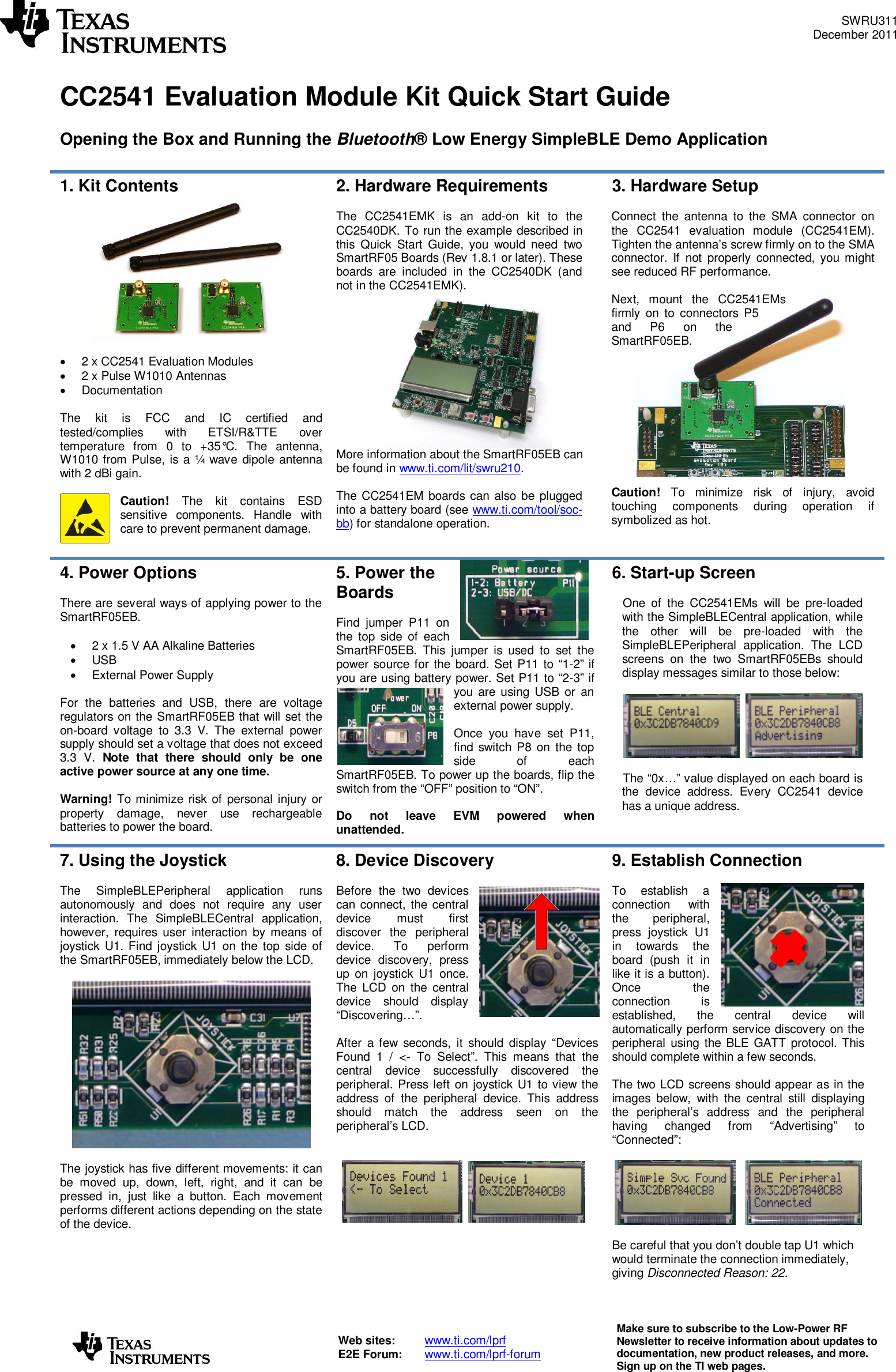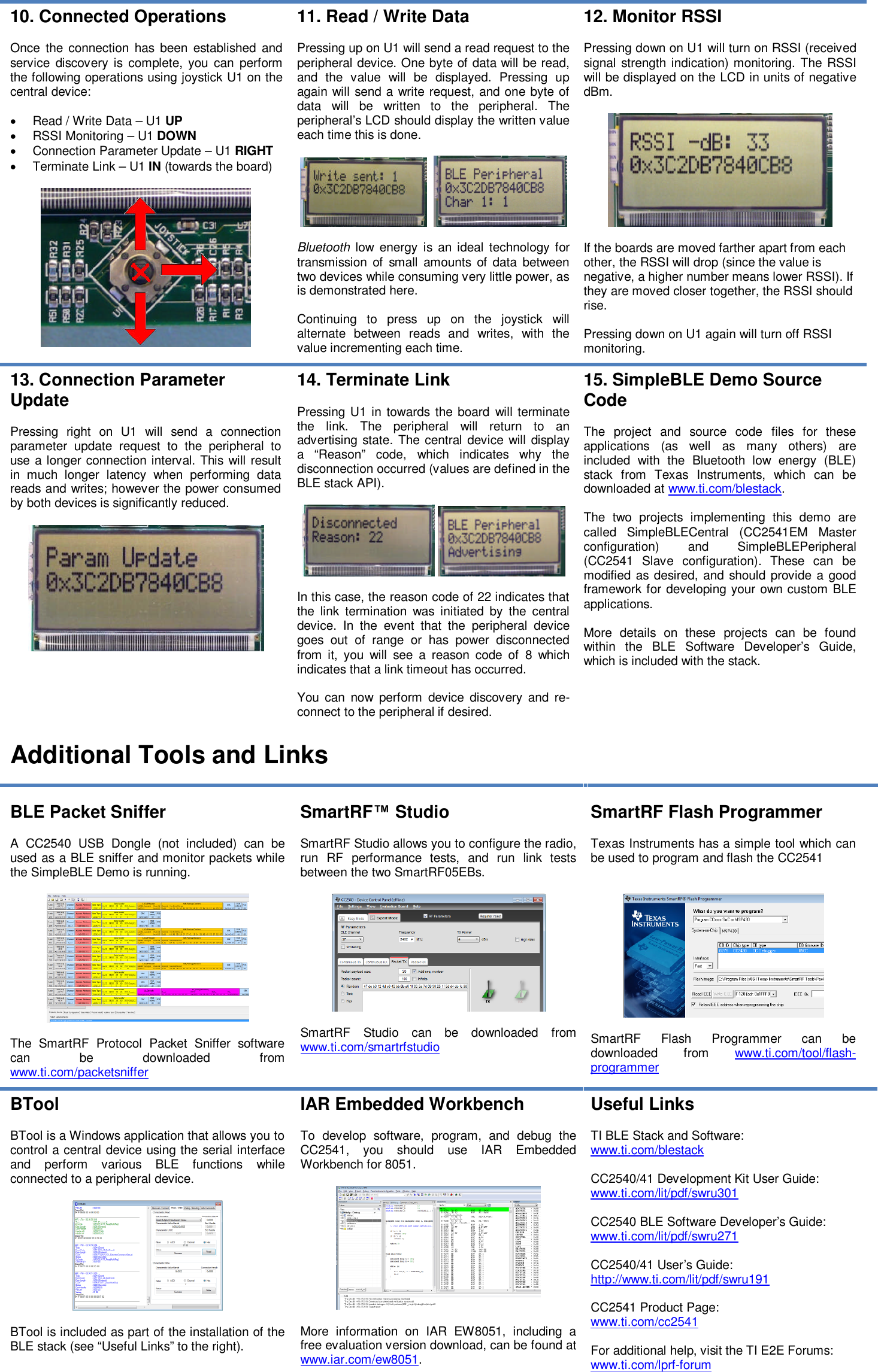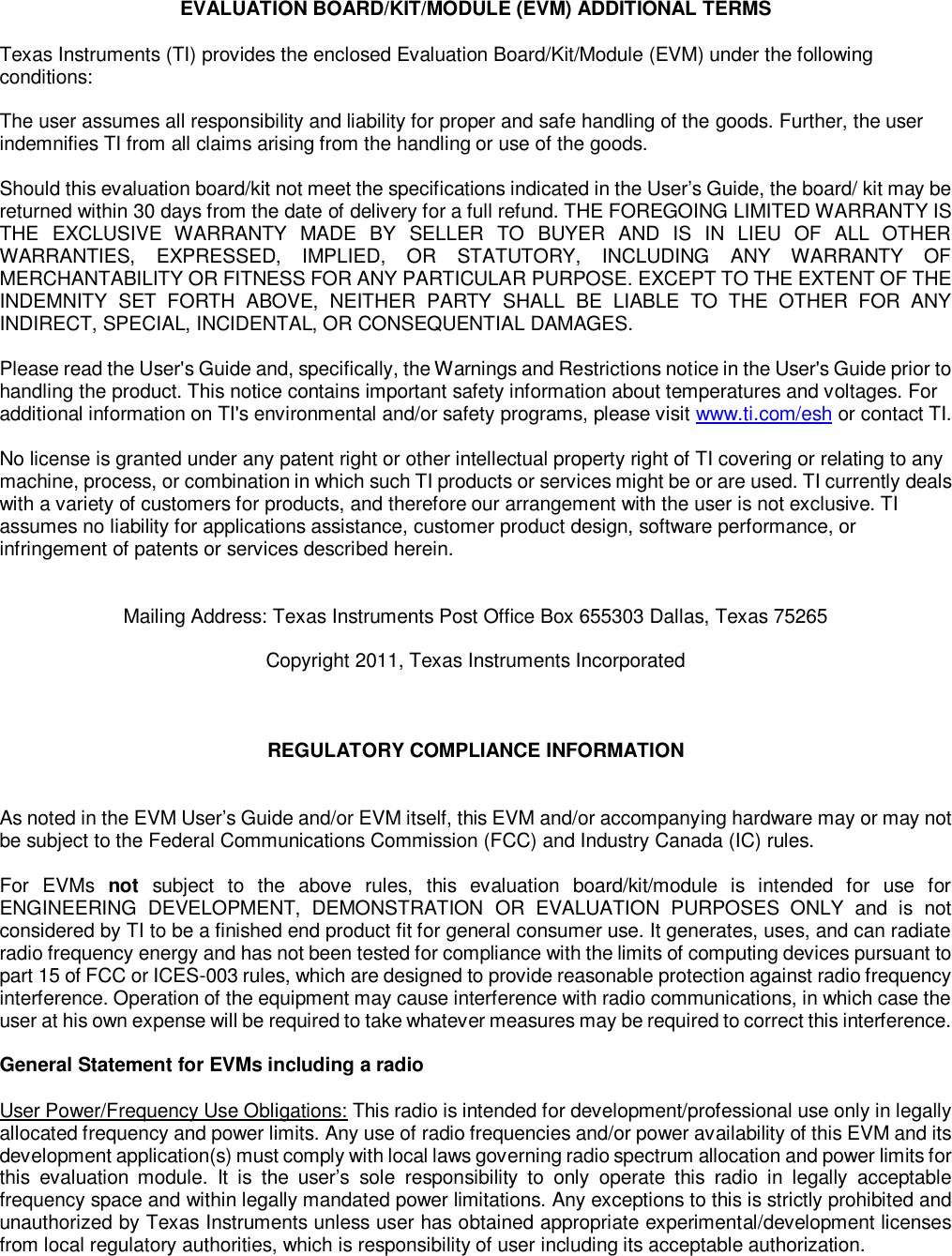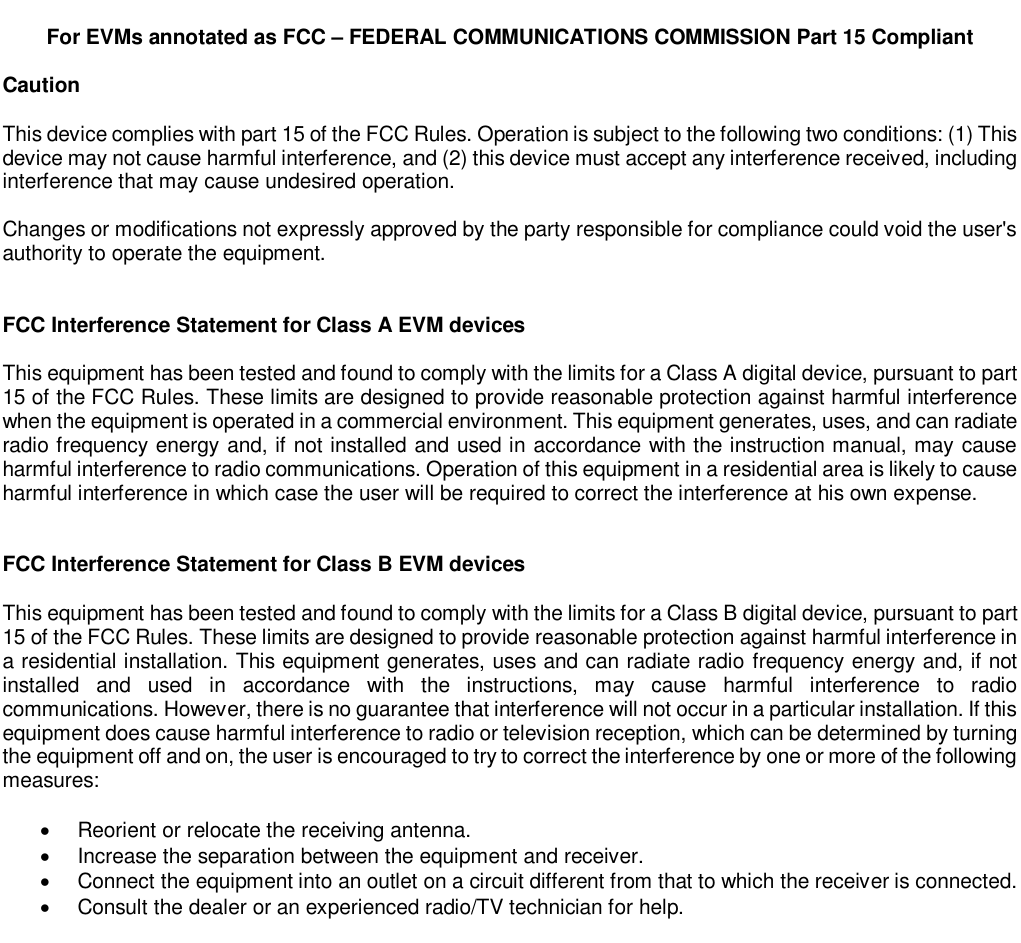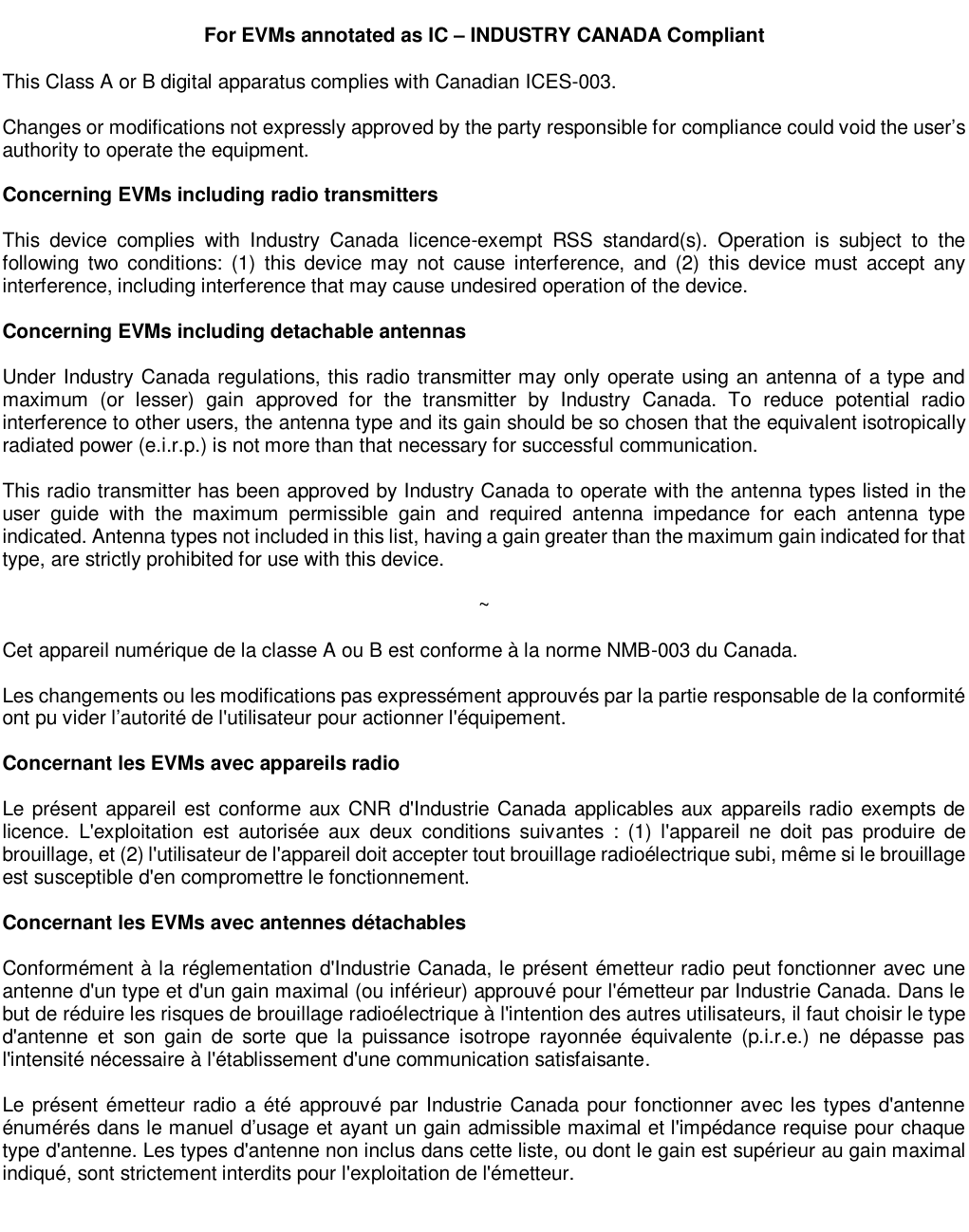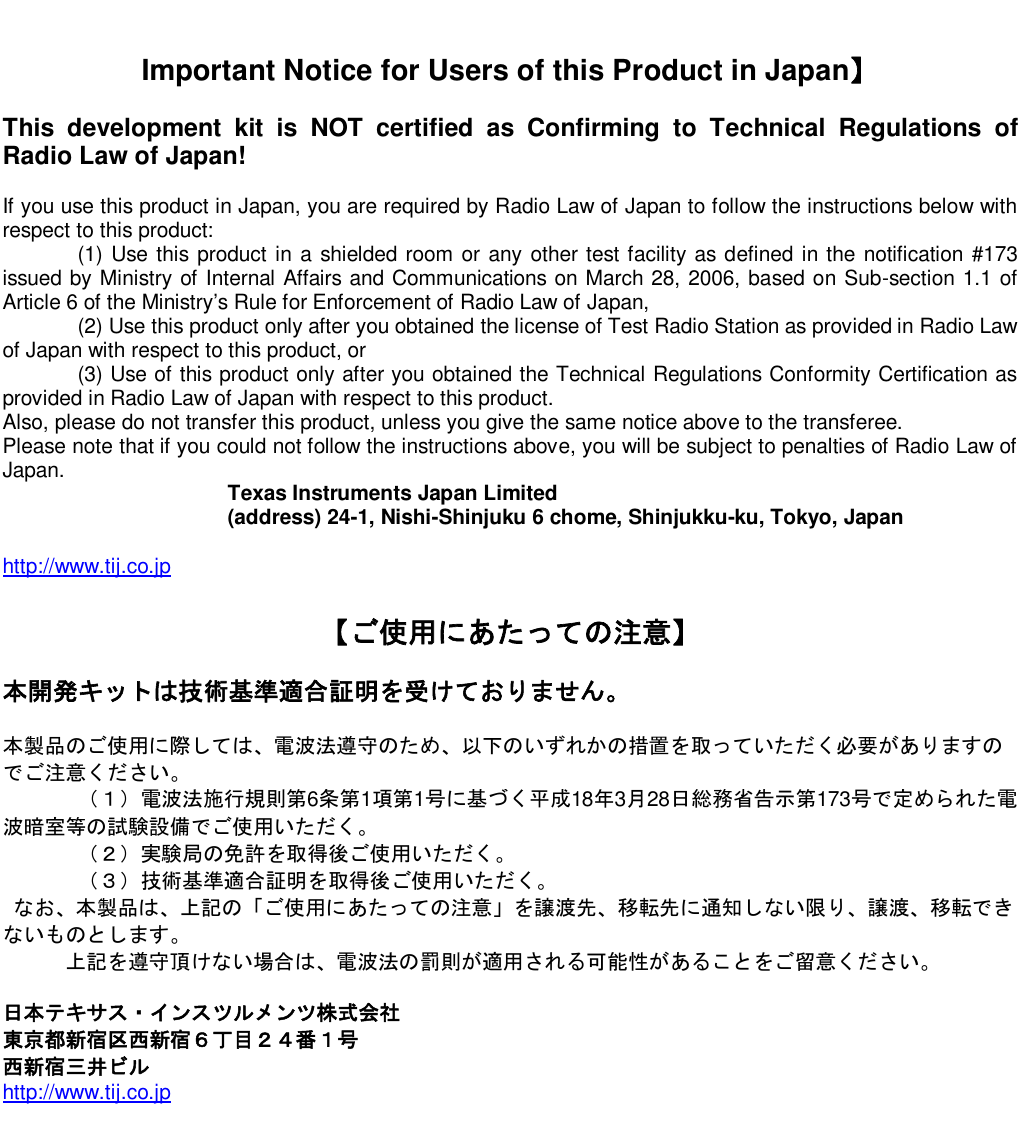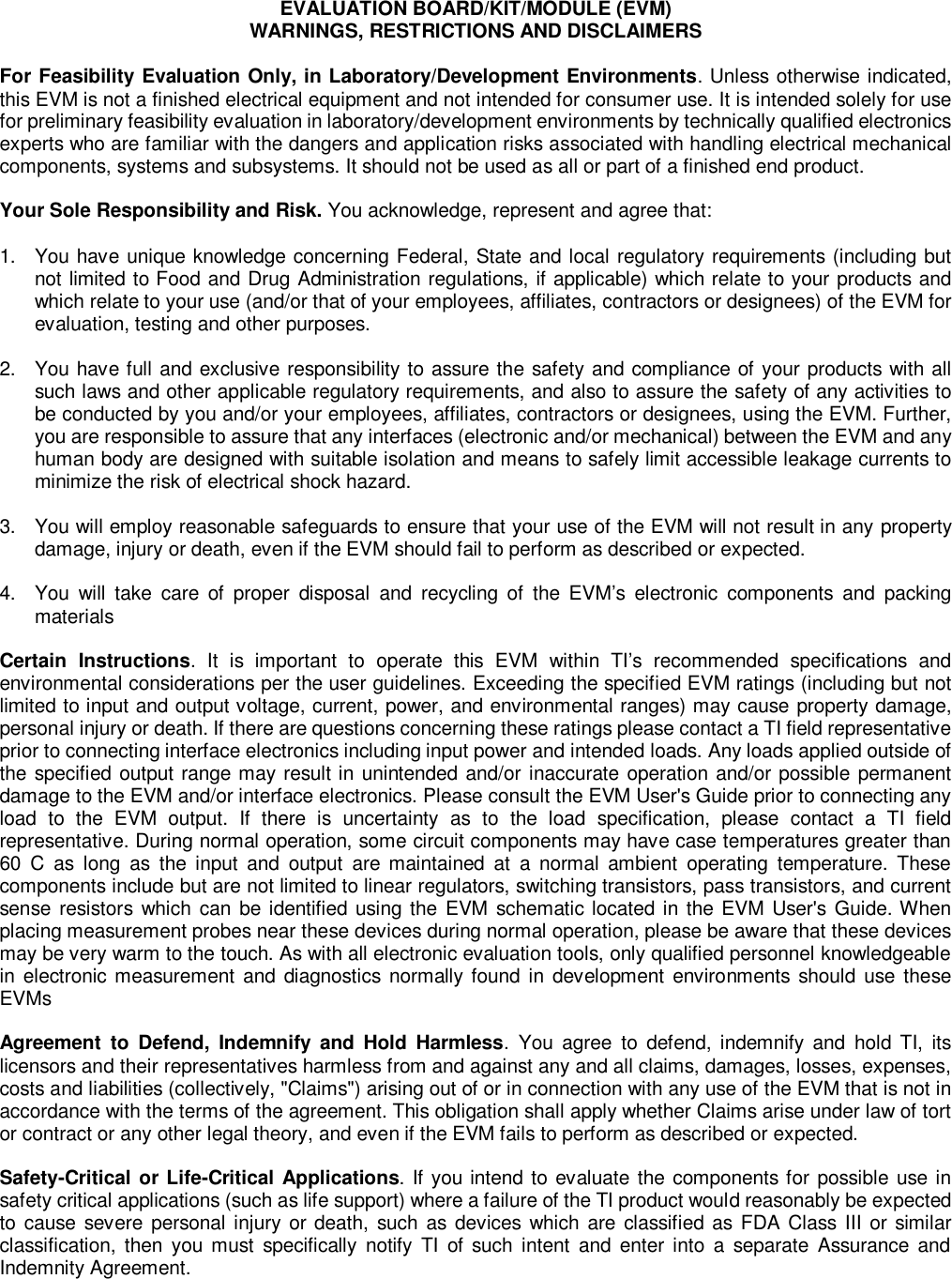Texas Instruments 2541EM The CC2541EM is a development tool for TI’s 2.4 GHz CC2541 Bluetooth® Low Energy System-on-Chip. User Manual
Texas Instruments Inc. The CC2541EM is a development tool for TI’s 2.4 GHz CC2541 Bluetooth® Low Energy System-on-Chip.
User Manual
